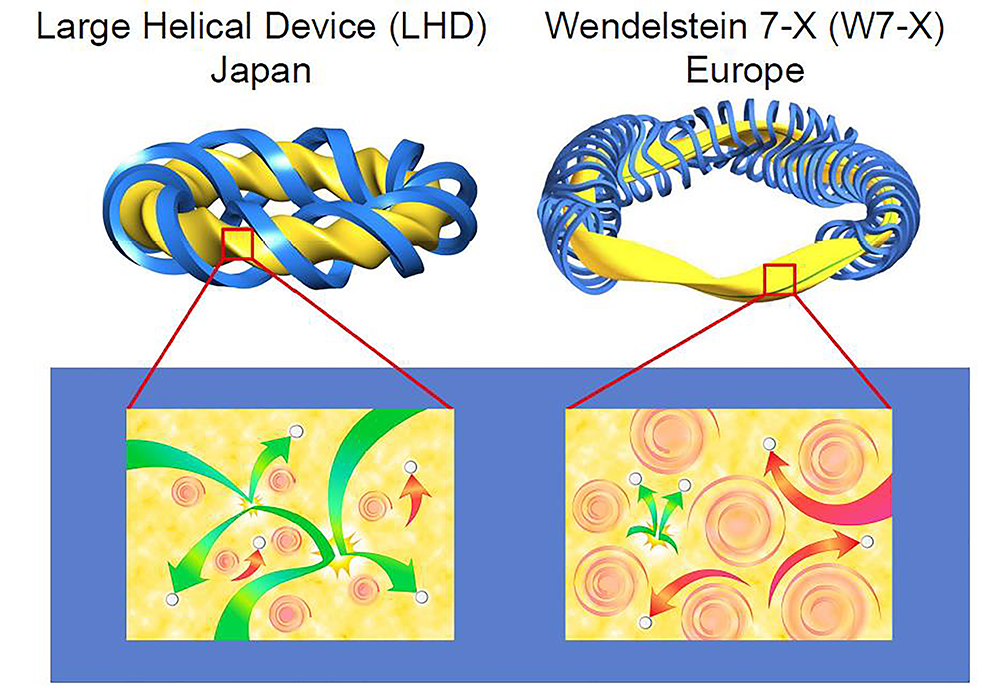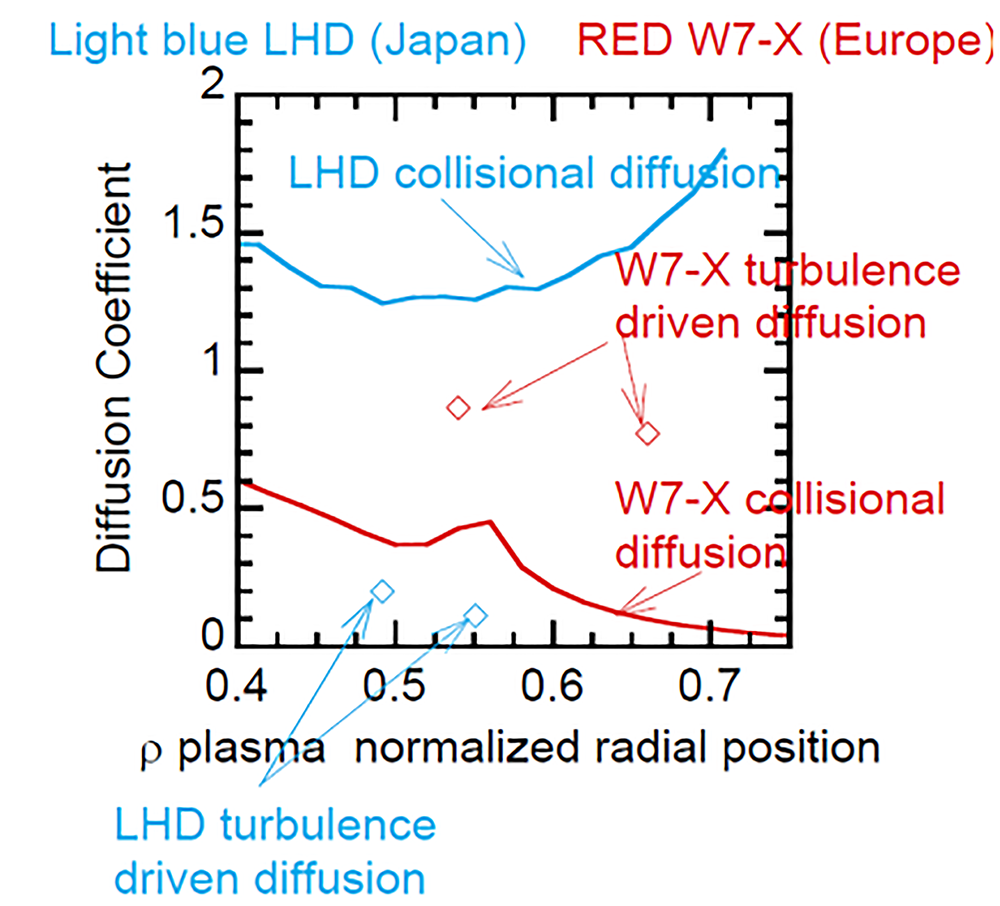Comparison experiments for the optimization
of helical reactor
There are several types of magnetically confined plasma devices for energy production. The mainstream of fusion research is the tokamak, where confinement magnetic configuration is produced by plasma current and external coils. The helical device is an alternative option, where confinement magnetic configuration is produced only by external coils. In a helical device, the coil structure is much more complicated compared with a tokamak. However, the helical device has a great advantage for steady-state operation and is favorable for future fusion reactor design. Presently the largest helical devices are Large Helical Device (LHD) at the National Institute for Fusion Science (NIFS) and the Wendelstein 7-X (W7-X) at the Max Planck Institute for Plasma Physics Greifswald (IPP Greifswald). Both devices use super conducting magnet and the sizes are comparable. We have carried out comparison experiments between the LHD and the W7-X. Thus, essential knowledge for the future optimization of the helical device was obtained.



In magnetically confined high temperature plasma, plasma energy and particles escape from the inside to the outside of plasma. This process is due to diffusion. Suppressing energy and particle diffusion is one of the important issues in fusion research. As shown in Fig. 1, there are two different diffusion processes. One is collisional diffusion, which is caused by the collisions of plasma particles (electrons and ions). Theoretical understanding of collisional diffusion is fairly advanced, and collisional diffusion can be suppressed by optimising the coil geometry. In the LHD, which started operation in 1998, collisional diffusion was suppressed to some extent, while the W7-X, which began operation in 2015, was able to significantly reduce collisional diffusion, compared to the LHD, by optimising the coil geometry. Another diffusion process is turbulence driven diffusion. The physics mechanism of turbulence diffusion is not yet clearly understood. Turbulence is a flow with eddies of various size, and turbulence is generated by many physics parameters. The turbulence eddies bring plasma energy and particles.
Experiments and supercomputer simulations of turbulent diffusion are being carried out all over the world for the understanding of its physics mechanism. For the design of a next generation of helical device, suppressing turbulence-driven diffusion is absolutely essential. Therefore, comparative experiments were carried out under identical experimental conditions at the LHD and W7-X, which have very different coil geometries. The magnetic field strength, heating power and plasma volume were almost identical, and plasmas with relatively similar density and temperature values were produced. The diffusion coefficients due to collisional and turbulent diffusion were evaluated by analysis, and it was found that collisional diffusion was clearly lower in the W7-X, while turbulent diffusion was clearly lower in the LHD, as shown in Fig. 3. The diffusion coefficients due to turbulence were in close agreement with the predictions of the supercomputer simulations for both the LHD and W7-X.
The strategy of the coil design for the suppression of collisional diffusion was clarified for the design of the W7-X. On the other hand, the strategy of coil design for the suppression of turbulence-driven diffusion is not yet known. However, we believe we had a hint to reduce turbulence-driven diffusion from this experiment. It was surprising that the hint to reduce turbulence-driven diffusion was found in the coil geometry of the LHD, where collisional transport is not reduced. If we can design the confinement coils with a combination of the best aspect of both the LHD and W7-X, and suppressing both collisional and turbulent diffusion are realized, then, significantly improving the confinement performance is expected.
This research work was carried out with the collaboration of Prof. Kenji Tanaka, Dr. Masanori Nunami and Dr. Motoki Nakata, all of NIFS, Dr. Felix Warmer and Dr. Pavlos Xanthopoulos both of IPP Greifswald.
The research results were published in Physical Review Letters, a journal by the American Physical Society on November 24, 2021.
